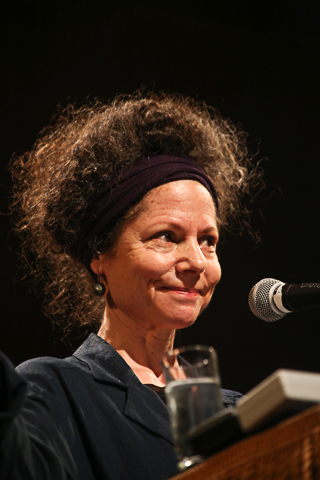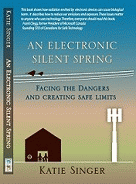Recording artists know that electrical "noise" can disturb their sound quality. Geologists and other scientists whose work requires sensitive meters have noticed that nearby elevators, computers, and solar-power inverters can render their electrical equipment dysfunctional.
In 1934, when the U.S. created the Federal Communications Commission, the agency began encouraging the public to invent and market electronics--as long as they did not create "harmful interference." They defined harmful interference as anything that interferes with existing radio, TV (and, now) Internet broadcasts.
The FCC's definition has never included biological harm.
Today, many scientists, physicians and laypeople recognize that long- and short-term exposure to electromagnetic radiation (EMR) emitted by electronics can harm human health and wildlife. (For more information about the biological effects of EMR exposure, visit www.bioinitiative.org, www.saferemr.com and www.electronicsilentspring.com; read An Electronic Silent Spring by Katie Singer.)
To protect ourselves from EMR emitted by electronic devices, first steps would include turning off the offender; correcting wiring and grounding errors, and not using a new technology until it's proven harmless.
Next steps start with measuring for EMR (magnetic fields and radiofrequency fields) in your home, school or workplace.
Thirdly come filtering and shielding. To clarify, we filter lower-frequency field currents that emit magnetic fields. We shield from radiofrequency fields.
To measure, filter and shield EMR, you need helpers who know how to use meters and how to install filters and shielding safely and properly. You need electricians and plumbers--and homeowners with open and experimental minds!
Below, electrical engineer Al Hislop describes how filters work and how they can increase magnetic fields. Al designed and built parts for the WMAP spacecraft, the first spacecraft to make precise measurements of cosmic background radiation. He also designed and built parts for the Rosetta spacecraft, currently orbiting comet 67P/Churyumov-Gerasimenko. The documentary "Broadcast Blues" shows Al using a meter to demonstrate that antennas broadcasting radio and television from Lookout Mountain near Golden, Colorado, emit radiation beyond what FCC guidelines allow. http://www.electronicsilentspring.com/primers/cell-towers-cell-phones/broadcast-blues/
Al Hislop: Before we discuss filtering, let's review briefly the difference between radio frequency (RF) and the fields associated with "dirty power" that we may want to filter. Most RF fields are deliberately produced in order to transfer information from one place to another without the use of wires. Examples of these fields are AM and FM radio, cordless telephones, television broadcasts, cell-phone signals and microwave transmissions. In all of these cases, the transmitted power is intended to "detach" from the transmitting antenna and radiate away. If one wishes to avoid these fields, one must either be far from the transmitting antenna, or one must employ "shielding" to either absorb or reflect the radiated signals from wherever you are.
Moving charges produce magnetic fields. For the purposes of this discussion, the moving charges we will consider are the electrons moving in the wires of your house wiring. The moving electrons are called the current. If no current is flowing in the wires (no electrons moving), then there is no magnetic field caused by the wires, even though there may be voltage on the wires.
(Note: You can view every article as one long page if you sign up as an Advocate Member, or higher).






